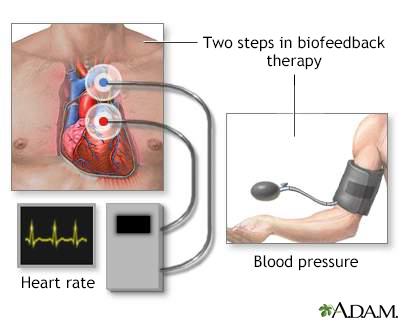Utilizing the Potential of Biofeedback to Transform Persistent Pain Control and Improve Quality of Living
Utilizing the Potential of Biofeedback to Transform Persistent Pain Control and Improve Quality of Living
Blog Article
Chronic discomfort is a syndrome that affects countless of individuals around the globe. It can be triggered by various factors, including injuries, diseases, or even stress. For many patients, controlling chronic pain can be a daily challenge that affects their standard of life. Traditional treatments often consist of drugs, physical therapy, and occasionally surgery. However, these approaches do not always provide the relief that individuals seek. Lately, biofeedback has emerged as a potential alternative for controlling chronic pain and enhancing overall well-being.
Biofeedback is a method that teaches patients how to control specific bodily processes by using indicators from their own bodies. This method includes using sensors that track physiological functions such as heart rate, muscle tension, and skin temperature. By offering immediate feedback, individuals can learn to identify their body's responses to pain and stress. This consciousness allows them to formulate strategies to manage their pain more efficiently. For instance, if a person observes that their muscle tension increases when they are in pain, they can practice relaxation strategies to help reduce that tension.
One of the primary advantages of biofeedback is that it enables individuals to take an proactive role in their pain management. Instead of relying solely on medications or treatments from healthcare providers, individuals can learn to understand and control their own bodies. This feeling of control can lead to enhanced confidence and a more optimistic outlook on life. Many individuals indicate feeling more in control of their pain and less like sufferers of their syndrome. This change this website in perspective can substantially improve their standard of life.
Studies has demonstrated that biofeedback can be beneficial in alleviating chronic pain symptoms. Studies indicate that patients who use biofeedback techniques often experience less pain and improved physical function. Additionally, biofeedback can help reduce anxiety and stress, which are frequent issues for those dealing with chronic pain. By tackling both the physical and emotional aspects of pain, biofeedback provides a comprehensive approach to pain control. This integrated method can lead to superior outcomes for individuals, allowing them to participate more completely in their routine activities.
In conclusion, biofeedback is a valuable tool for transforming chronic pain management. By teaching individuals to understand and control their physiological responses, biofeedback empowers patients to take control of their pain. This method not only helps alleviate pain but also improves overall standard of life. As more people seek alternatives to traditional pain management methods, biofeedback stands out as a promising option. With continued research and recognition, biofeedback could turn into an integral part of chronic pain treatment, helping patients lead more fulfilling, more satisfying lives.